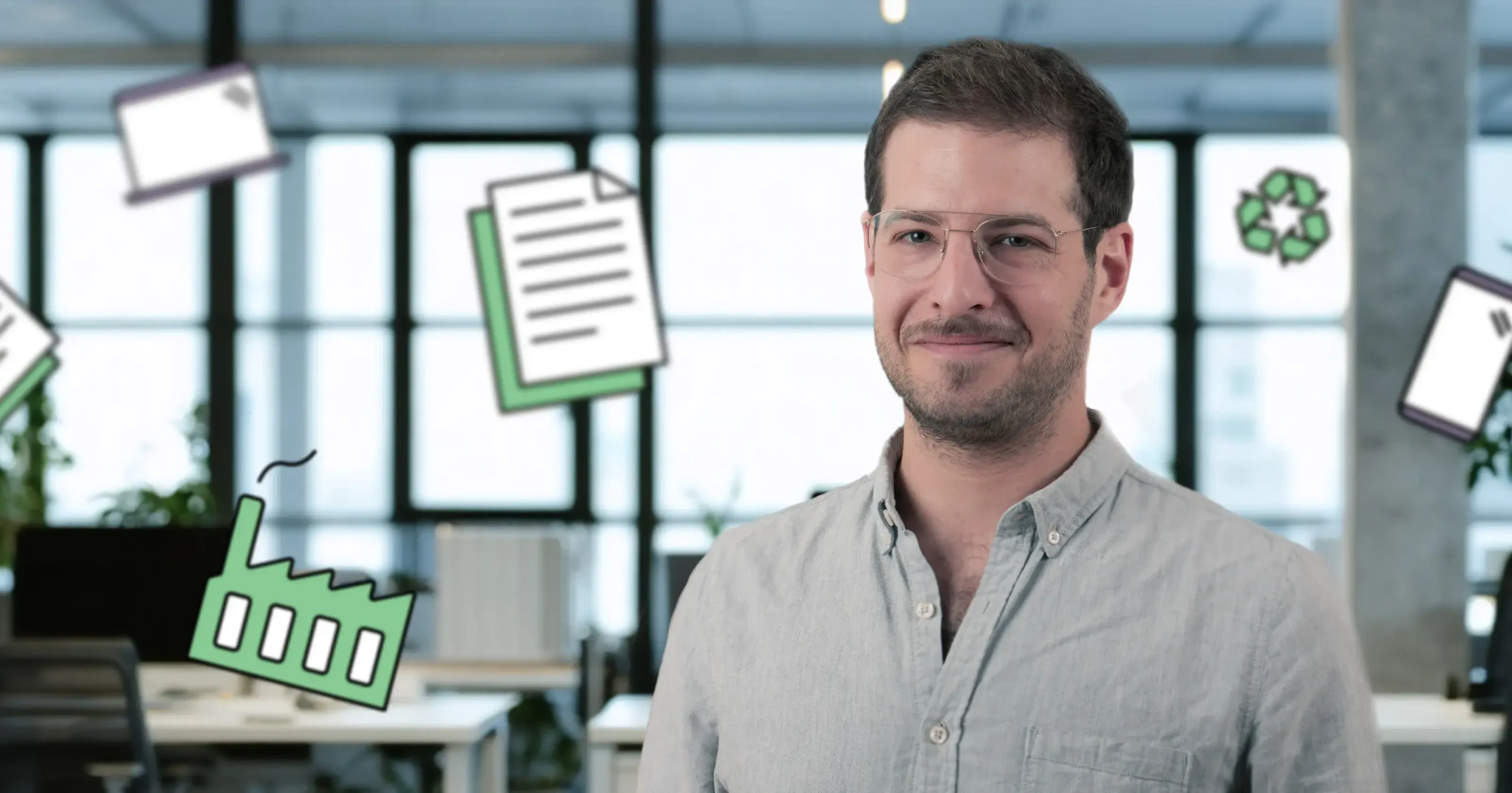This opinion piece is published by GreenBiz
By managing the life cycle of IT products such as notebook computers differently, your organization can address some of the world’s most urgent sustainability issues.
Today, our way of producing and using information technology contributes to sustainability problems such as the overuse of scarce, natural resources and the massive exposure of hazardous substances to humans and the environment.
The circular economy offers powerful solutions that can help address these issues. This article focuses on how your organization can purchase and manage IT products, specifically notebook computers, in a circular way — a strategy that can benefit your company’s sustainability agenda and that could lead to financial benefits as well.
Extending product life cuts CO2 emissions
An important tenet of circular economy business model is to keep products and materials in use as long as possible. This is definitely something to think about when it comes to the notebook computers your organization purchases and uses.
IT products are a source of greenhouse gases (GHGs) throughout their entire life cycle — from manufacturing through to distribution, use and disposal. To identify the best way of lowering these emissions, you need to know where they come from.
In the report, “Impacts and Insights: Circular IT Management in Practice”, TCO Development investigates the GHG output from the manufacturing, distribution, use and disposal of a notebook computer and how purchasing a new one impacts GHG emissions, compared with extending the life of an existing device.
The analysis concludes that a vast majority of the GHGs are emitted in the manufacturing phase. When a notebook is used for four years, the estimated total carbon footprint is 299 kilograms during its life cycle. Of this, 79.8 percent of the greenhouse gases are emitted in the manufacturing phase, 6.8 percent during transportation, 13.2 percent in the use phase and 0.2 percent at end of life.
Since almost 80 percent of emissions occur in the manufacturing phase, extending a notebook computer’s product life will clearly lead to substantial reductions of GHG emissions.
When a notebook is used for six years instead of four, GHG emissions are reduced by 29 percent. For an organization with 1,000 employees, this means a reduction of 216,250 kg over a 10-year period. This strategy also saves natural resources and prevents electronic waste.
Buying a new, more energy-efficient product isn’t the answer
You might think replacing an old notebook with a brand-new, more energy-efficient one is a good way to save energy and reduce your organization’s carbon footprint. While this may be true for some household appliances, the same cannot be said for notebook computers.
TCO Development’s analysis suggests the positive effect of saving energy in the use phase is overshadowed by the enormous energy consumption in manufacturing, from raw materials extraction through to assembly.
For example, if the new notebook is 10 percent more energy-efficient, it must be used between 33 and 88 years before the reduction in energy consumption in the use phase has made up for the GHG emissions related to manufacturing.
Circular management practices start with procurement
While extending the life of a notebook computer may be one of the most important things your IT organization can do to save natural resources and reduce GHG emissions, we also need to recognize that not all IT products are made for a long service life.
To allow for circular management of your organization’s IT products, you need to purchase products that can be managed with circular economy principles in mind. They must be durable, upgradeable and easy to repair.
Another important aspect is battery life. Mobile IT products, for example, are often replaced because the battery has lost its capacity to hold a charge, so in order to extend product life, the battery must be of high quality and be replaceable.
Longer product lives lead to financial benefits
Purchasing new IT equipment in short contract cycles is expensive. TCO Development’s analysis shows that by extending a product’s lifetime from three to six years, the cost of purchasing and using a complete computer workstation can actually be reduced by 28 percent, or $570, over a period of 10 years.
That’s true even when the cost for upgrading 50 percent of the notebooks with new random access memory, solid-state drives and batteries is factored in.
When notebooks are purchased in longer intervals, organizations can also realize savings related to the cost of purchasing the products and for administering the procurement process.
Another issue to consider: Treating used IT products as a waste stream instead of extending their life or even reselling them represents a missed opportunity for cost savings and income.
Your company’s IT products may have value even if they no longer meet the needs of your team. Introduce take-back programs within your organization and discuss resale options with a reputable refurbishment or remanufacturing firm.
To lower the purchasing cost of new products, you can also consider buying one that has already been used. Focus on functionality, and make use of the possibilities offered by professional refurbishing and remanufacturing businesses.
Adopting circular business practices is a team effort
Embracing a circular economy business model is all about considering a product’s full life cycle. In the case of IT management, it starts with repairing and upgrading IT products — not just the notebooks referenced throughout this article — when needed instead of disposing of them.
For example, simple actions such as making sure all smartphones have cases and screen protectors can improve durability.
When shifting to a circular IT management model, your organization needs to consider the effects on its employees. Engage them and make sure you have a mandate to change their routines. To do this, identifying clear incentives for making the switch are important.
What are the benefits of going circular? It could include cuts in CO2 emissions for your organization, better operational results or lower costs for IT management. Be ready to discuss these impacts to support your business case.
Certifications can help with decision-making
TCO Certified is a global sustainability certification for IT products. In 2019, around 32 million notebooks were manufactured to meet this programme. These products are independently verified to meet a comprehensive set of sustainability criteria throughout the validity of the certification period that enable circular IT management choices. All of these products are made to endure a long lifespan and are upgradeable, repairable and recyclable.
One final thought: If all the TCO Certified notebook computers manufactured in 2019 were used for six years instead of four, it would result in a reduction of GHG emissions of approximately 4,153,600,000 kg CO2 equivalents. That equates to the annual average carbon footprint of more than 833,000 people.
Learn more about how you can take the next step in managing IT products in a circular way in the report “Impacts and Insights: Circular IT Management in Practice”.

Clare Hobby
Clare Hobby oversees purchaser engagement programs for TCO Development, the organization behind TCO Certified, the global independent sustainability certification for IT products. TCO Certified is used by procuring organizations and the IT industry to drive environmental and supply chain responsibility in the IT ecosystem.
Clare is a board member of the Sustainable Purchasing Leadership Council and SPLC’s Technical Advisory Group for IT Hardware, the Clean Electronics Production Network, UN Environment’s One Planet Network and the Canadian Public Procurement Council. She holds Masters degrees from Northwestern University and the University of Melbourne, Australia and Executive Education in Sustainability Leadership at Harvard.




